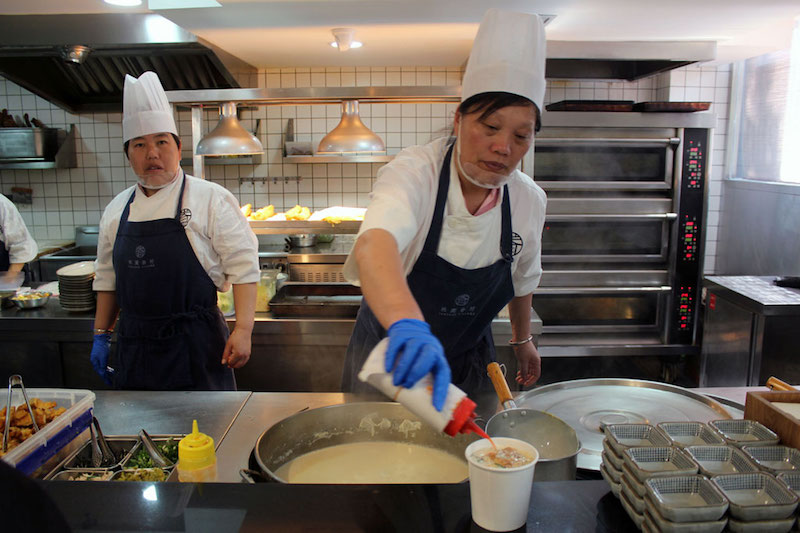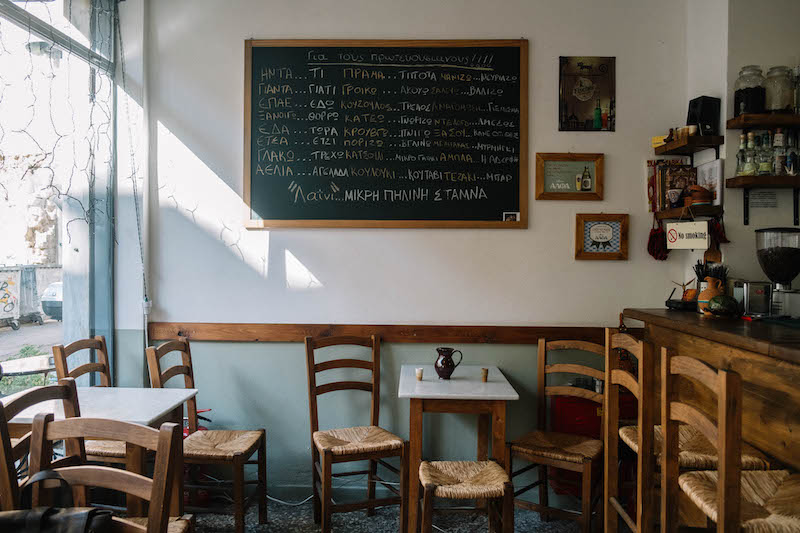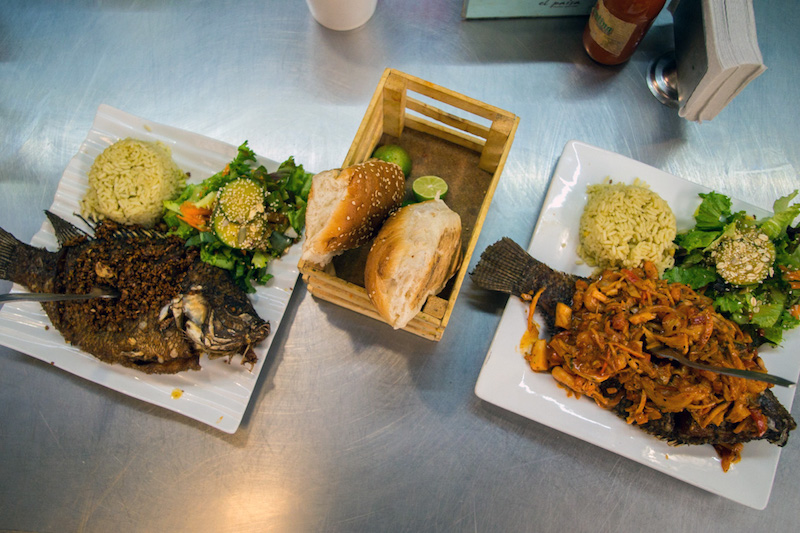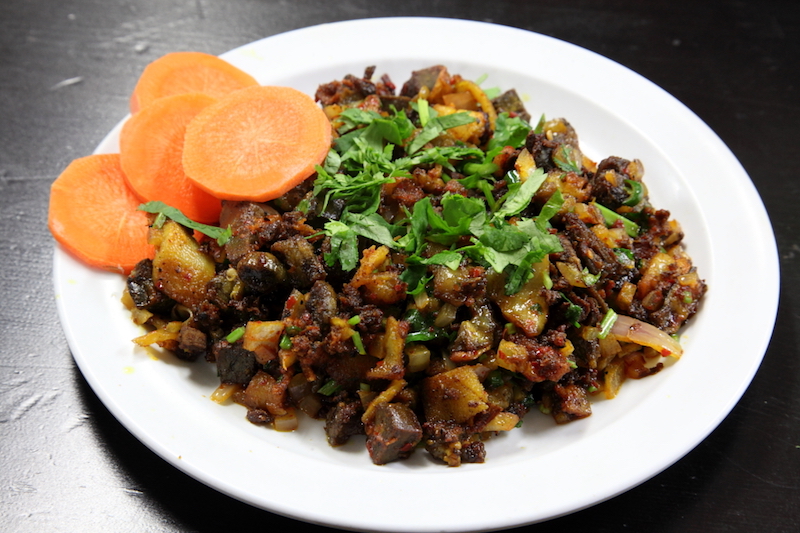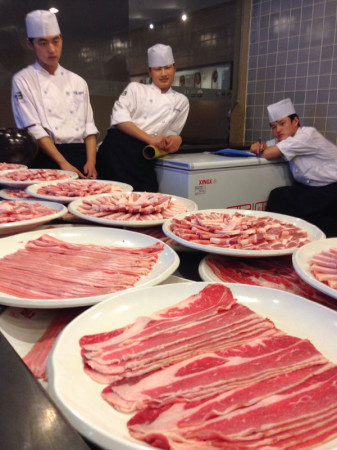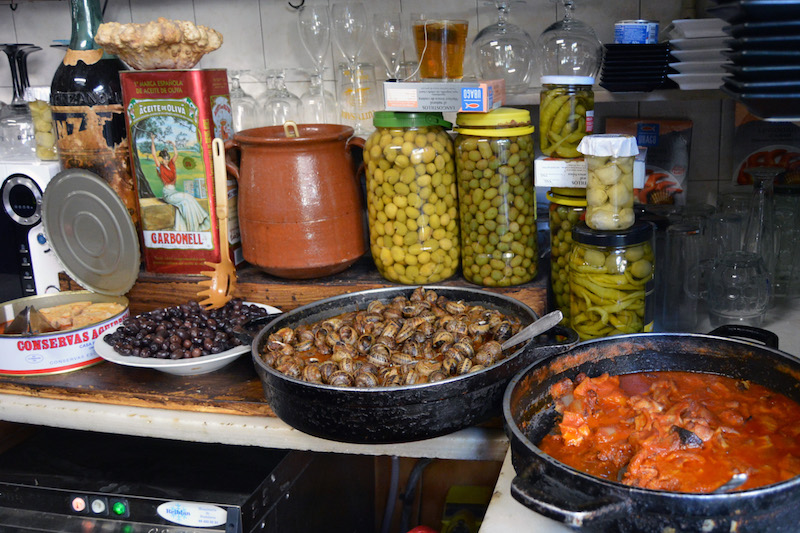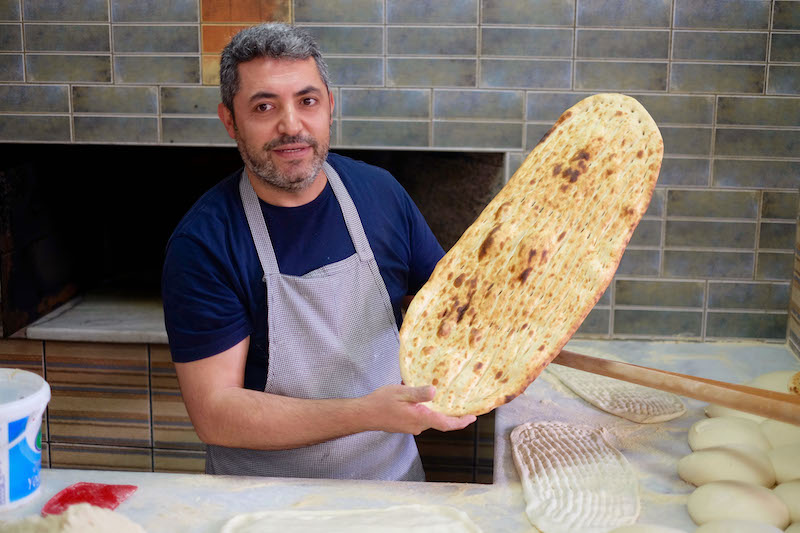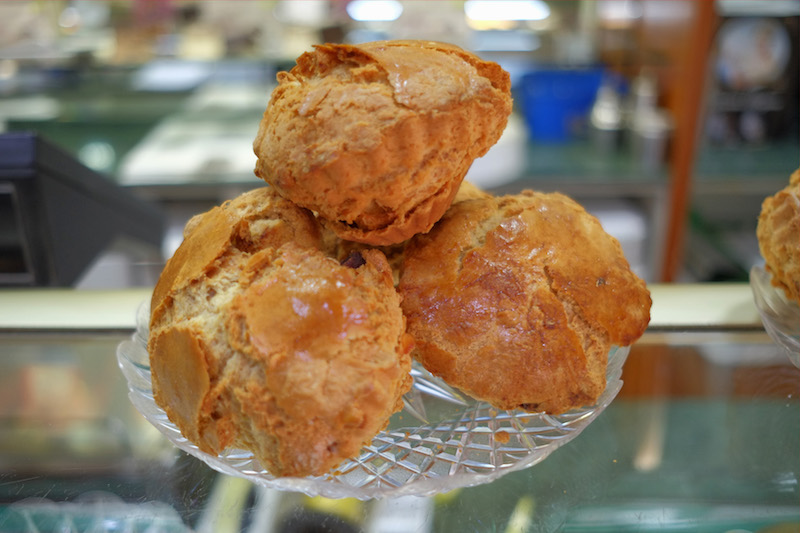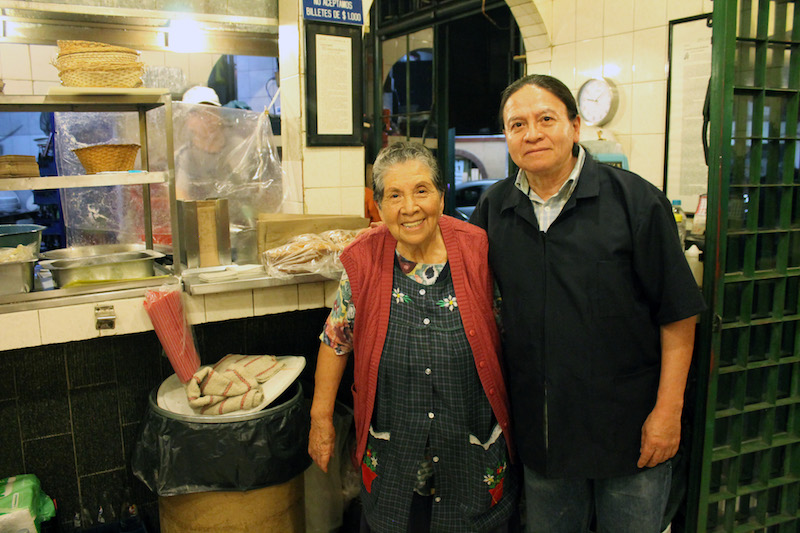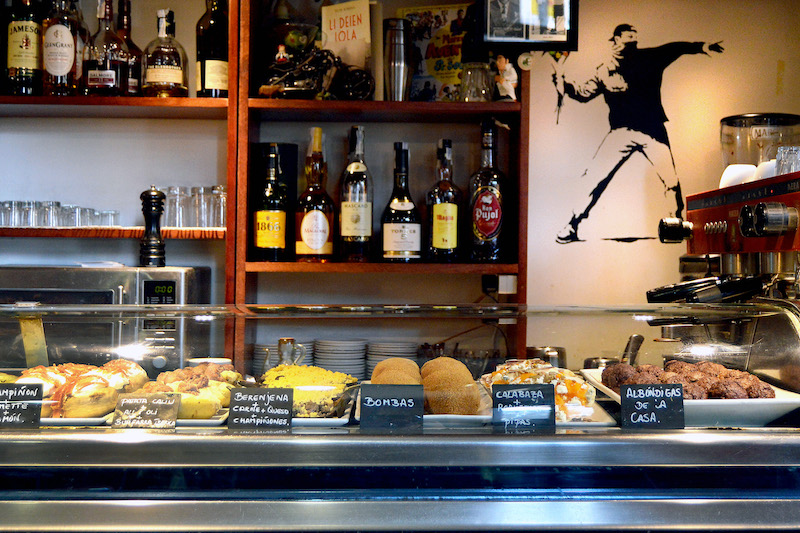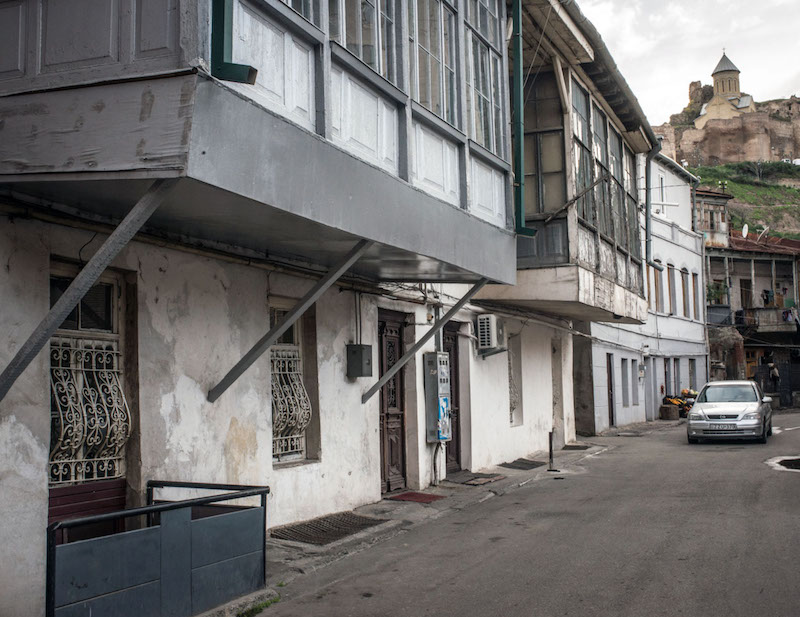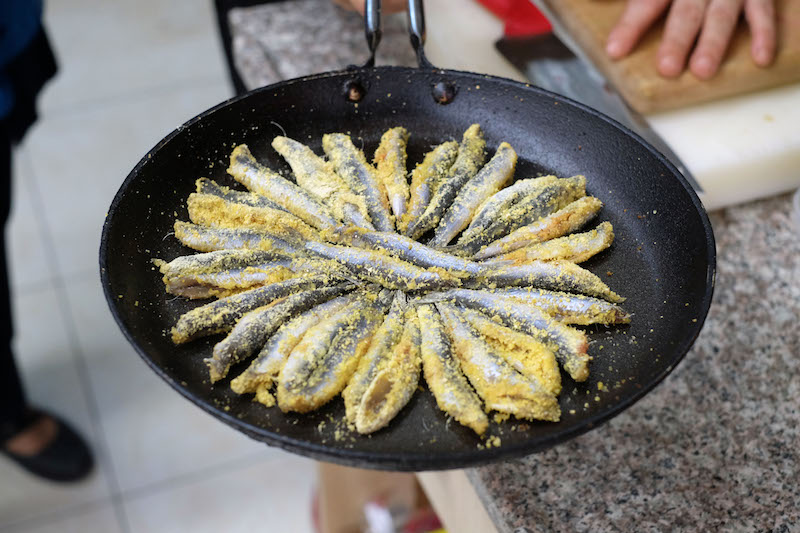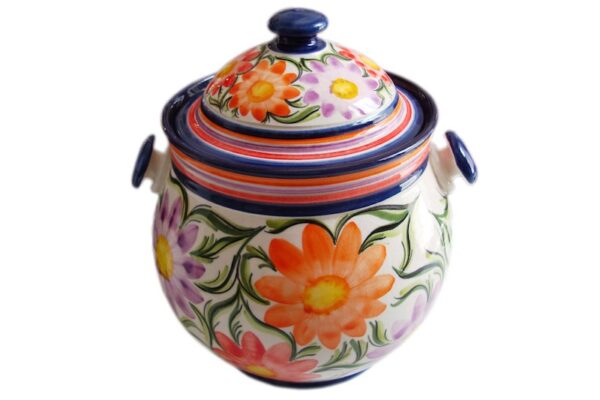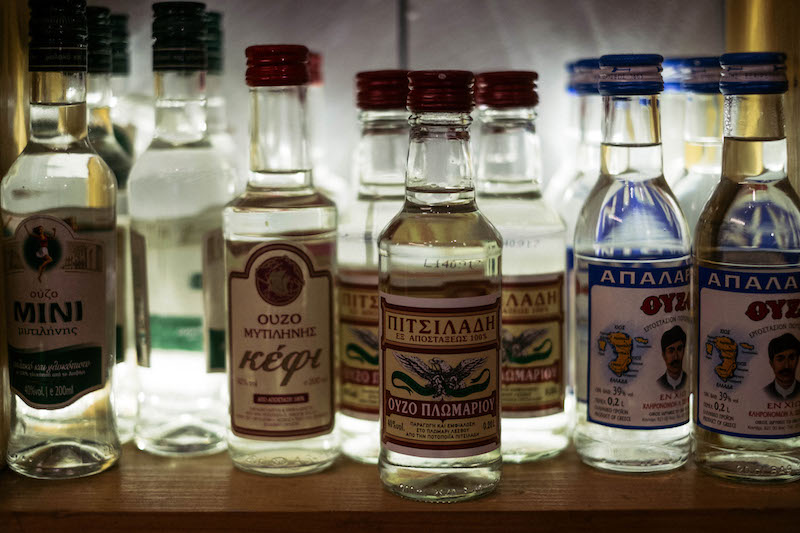We can't find the internet
Attempting to reconnect
Something went wrong!
Hang in there while we get back on track
Search results for
Worldwide
Going Deep: Neighborhoods to Visit in 2018
As the calendar year turns over, we’ve grown accustomed to the barrage of lists telling us where to travel during the next 12 months. Oftentimes these places are a country or even a whole region – you could spend an entire year exploring just one of the locations listed and still barely make a dent. We like to travel on a smaller scale. Forget countries and cities, for us the neighborhood is the ideal unit of exploration. Celebrating neighborhood life and businesses is, of course, essential to what we do as Culinary Backstreets. Since our founding in 2012, we’ve been dedicated to publishing the stories of unsung local culinary heroes and visiting them on our food walks, particularly in neighborhoods that are off the beaten path.
Read moreQueens
Weekender Billiard: Bhutanese Break
The view from Weekender’s doorway is promising only for those comfortable with snooker: The room is dominated by three intimidatingly broad tables devoted to that challenging cue sport. Compared with New York’s typical coin-op bar-pool tables, a snooker table’s balls are smaller, its pockets tighter and successful shots consequently rarer. They certainly were for us. Crossing to the far side of the counter, we found more action, of a different sort, in a screened-off dining area provisioned by a Bhutanese kitchen. This Woodside establishment is one of the few in all of New York that serves the cuisine of Bhutan, a Himalayan kingdom landlocked between Tibet and India.
Read moreRio
Rotisseria Sírio Libanesa: The Open Table
On a Monday at 1 p.m., private equity investor Nargilla Rodrigues and her two colleagues bring a fourth co-worker to the Rotisseria Sírio Libanesa in Rio’s Largo do Machado neighborhood to initiate him to their weekly lunch ritual. An army of diners in business attire have packed the small restaurant and clump around the to-go counter. Rodrigues grabs a standing table and fires off an order of stuffed cabbage leaves, kafta and lentil rice like they are shares in a fire sale. With the same auctioneer’s speed, but a deeper boom, Antonio Oliveira, an employee at the restaurant for 19 years, sends the order back to the kitchen. Soon the bankers’ small table is overflowing.
Read moreBarcelona
King for a Day in Barcelona
On January 6, bakeries throughout Barcelona are filled to the brim with tortell de reis (roscón de reyes in Spanish), or kings’ cake. Whoever finds the king figurine hidden inside the cake is declared king for the day and wears the gold paper crown that comes with the sweet treat.
Read moreTbilisi
Sunflower Health Food Store: Organic Change
The year was 2001, and we were squeezed around an enormous table, together with a half dozen men in their late fifties, in a small conference room at a Soviet-era tobacco collective in Lagodekhi, near the Azerbaijan border. The director of the collective casually slipped a biography of Joseph Stalin under the table and told us the story of the farm, although we weren’t really interested. Our local host had hijacked us into the meeting, believing we could give these gentlemen sound business advice simply because we were westerners. “Our tobacco is natural, no chemicals,” the director asserted. “Yes,” another man interjected with a grin, “we have no money for chemicals.” The men all chuckled.
Read moreShanghai
Mi Xiang Yuan 2.0: The Rice Stuff
When Chef Anthony Zhao was planning the relaunch of Mi Xiang Yuan, a home-style lunch spot popular with local office workers looking for a healthy set meal, he knew he had to get one thing right: the rice. At the first alleyway restaurant just north of Xintiandi, Zhao sourced many of his ingredients for his Shanghainese bento boxes from family members’ farms. These small operations used organic techniques, although they were too small-scale to obtain official certification. But high demand for his set meals has made sourcing from family farms impossible. So while updating the menu for the latest Mi Xiang Yuan, Zhao approached sourcing ingredients with the same standards – even if it wasn’t going to come from a family member’s farm, it still had to be of the highest quality.
Read moreTokyo
Osechi Ryori: Edible New Year
‘Tis the season of the Japanese New Year’s trinity: osechi, oseibo and nengajo. Like newsy Christmas cards, the nengajo is a recap of family or personal news mailed in postcards during the weeks preceding the end of the year and efficiently delivered all over Japan promptly on January 1. The winter gift-giving season is in full swing, with companies and individuals sending oseibo gifts as thank-you expressions for kindnesses over the year. Most gifts are food or household items like cooking oil or soap. The best of the traditions is osechi ryori, traditional New Year’s cuisine. Osechi is not something one can find in a restaurant because it’s eaten only one time a year, at home or when visiting others at home.
Read moreAthens
To Laini: Pass the Pitcher
The name of To Laini, a traditional-style kafeneio (a café that also serves food) specializing in Cretan cuisine, hints at what type of night one will have at this cozy spot. The word “laini” derives from ancient Greek and is widely used on Crete and the Cycladic islands to describe the small ceramic pitcher used to transfer water, wine or tsikoudia (a traditional Cretan spirit made from the distillation of grape pomace). Let’s just say, they’ll be transferring a lot of ceramic pitchers to your table over the course of a meal. The spot was opened in March 2017 by two childhood friends, Yioula Svyrinaki and Michalis Psomadakis. They both grew up on Crete, the island known for its rich cuisine and high-quality food products.
Read moreNaples
Building Blocks: Something in the Water in Naples
The city of Naples sits nonchalantly in the shadow of Vesuvius, which has remained quiet – yet active – since the famous eruption in 79 A.D. that destroyed Pompeii and Herculaneum. Despite its prominence, Vesuvius is not even the most powerful volcano in Napoli. That distinction belongs to the Phlegraean Fields, an underground caldera that forms the Bay of Naples. Around 12,000 years ago this super volcano exploded so violently that it shaped the continent of Europe. You might think that with all these active volcanoes around, Neapolitans would be afraid. They aren’t. In fact, most seem to relish the nearby volcanoes, claiming that they make the food here taste better.
Read moreLisbon
CB Book Club: Nuno Mendes’ “Lisboeta,” A Love Letter to Lisbon
Nuno Mendes is excited. He’s standing at my kitchen counter, where laid out before him are pieces of half-moon-shaped dough, each encasing a juicy meat mixture. They’re about to go into a pan filled with bubbling oil. My mom, Lica, is nervous. She is sharing her mother’s recipe for pastéis de massa terra, a traditional Portuguese savory pastry, with the highly esteemed chef of Chiltern Firehouse and Taberna do Mercado in London. He has heard about her mouth-watering pastéis from a mutual friend and decided to see for himself just how good they are. Worried that the dough isn’t quite right, she drops in the first one and the pastry bubbles up crispy, as it should. When it’s finished, she gives it to Mendes, who takes one bite and says, “Wow, these are amazing!”
Read moreTbilisi
Tbilisi Sketches: Muscling Up Some Churchkhela
Tbilisi stores and markets are festooned now with distinctive sausage-shaped candies called churchkhela, ready for New Year celebrations and then Orthodox Christmas on January 7. They are a very traditional Georgian specialty, usually homemade from grape juice thickened with flour and nuts. But those aren’t the only ingredients you need to make churchkhela – they also require some serious muscle. How could it be otherwise for a food created by Georgian warriors as a sugar hit that wouldn’t perish on a long march? It was, in other words, one of the world’s earliest energy bars. “We still do it the same way as our ancestors,” says Khatuna Saalishvili, as we watch her and her husband, Temuri, start the process in their backyard in the village of Kisiskhevi. A wood fire heats a large metal cauldron filled with the mix of grape juice and flour known as tatara. The steam shines in the winter sun.
Read moreMexico City
Best Bites 2017: Mexico City
Hit by a devastating earthquake in September, Mexico City has certainly faced some challenges this past year. But life in the city marches on, and adventurous foodies can still find a great meal simply by following their nose. Our DF correspondents did just that in 2017, rediscovering some old favorites and branching out into unchartered territory. Mercado Jamaica By far my favorite food experience of this year was exploring Jamaica Market. Mostly known for its wholesale flower section, this large market offers much more: fresh produce, colorful piñatas, and incredible food. In fact, it is home to three of my favorite food stands in the city.
Read moreRio
Best Bites 2017: Rio de Janeiro
Brazil’s economic crisis has hit Rio hard this past year, and the culinary scene was by no means immune from the downturn. Some famous restaurants and bars closed their doors for good. But the city hasn’t given up. In fact, if some doors have closed, a lot more have opened. Because now creativity is being used as a weapon against the crisis, and not only at newly opened spots. Established bars and restaurants have been reinvigorated with new ideas and processes. In this atmosphere, many exciting culinary novelties have made their way to the streets, ready for us to indulge in, all without having to spend too much money. So my best bites of 2017 reflect this abundance of good and cheap novel eats that have become so popular in these leaner times.
Read moreQueens
Best Bites 2017: Queens
Queens is a grazer’s paradise. On any given day the devoted food lover will find that the culinary experiences come early and often, thick and fast, in mind-boggling variety. Limiting the year’s favorites to a mere handful, then, is problematic when they easily outnumber the combined total of fingers and toes. Consider these five – each in a different neighborhood of Queens – as points of departure for further exploration. Nepali Bhanchha Ghar From the sidewalk the seating area seemed tiny. It was within enticing range of the cooktops at this Nepali “kitchen home” (pronounced Bahn-sah gar) but also exposed staff and patrons to periodic sub-Himalayan gusts from the front door.
Read moreNaples
Best Bites 2017: Naples
In 2017, the Naples food scene took many steps forward by taking a step back: Restaurants resurrected ancient ingredients and most importantly, in a city famed for its pizza and pasta, old flours native to southern Italy made a comeback. The renewed interest in quality can be observed in all corners of this great city, from fast food joints to starred restaurants. My favorite eats of 2017 centered on those spots that attach importance to the basics, serving Neapolitan cuisine made with only the finest traditional ingredients. But it wasn’t the food alone that hooked me: The special people who manage these places played as large of a role, if not larger, in drawing me back to their tables time and time again.
Read moreBarcelona
Best Bites 2017: Barcelona
This was an intense year for Barcelona, with a complex political situation stemming from Catalonia’s bid for independence from Spain. It was a storm that the culinary scene could not help but get caught up in. Bars and restaurants have always been a temple of leisure and pleasure, but we sometimes forget that they also serve as a space for people to connect and debate. And in the spirit of debate, food and drink constitute another form of expression, an indication of a restaurant’s cultural leanings. In Barcelona this year, we could taste the continued interest in developing and strengthening Catalan cuisine, often considered an extension of Catalan identity. But we also observed the food scene’s openness to other regional cultures and global influences.
Read moreShanghai
Best Bites 2017: Shanghai
Shanghai’s dining scene still contains its share of neighborhood dumpling and noodle shops, but the overall trend is marching towards mall dining and chain stores in the ever-changing downtown, historic and suburban areas. A silver lining: At least a handful of our favorite street stalls have also taken the plunge into new digs, with the same dishes, but shiny (read: soulless) interiors. You win some, you lose a lot sometimes. Benjia Heading out to Gubei, Shanghai’s East Asian expat district, for Korean barbecue is one of our favorite meals any day of the week, but this year we brought a friend who took the meal to a whole new level.
Read moreLisbon
Best Bites 2017: Lisbon
With new restaurants popping up in this increasingly popular city and so many more disappearing due to rising rents, 2017 was a year of change – both good and bad – in the Lisbon food scene. We mourn those spots that have left us, but also celebrate the arrival of some exciting places helmed by a new crop of young chefs who are highlighting quality and local products and ingredients. Pies at Bel’Empada: Bel’Empada, a tiny restaurant and takeaway in Alvalade, a residential area in the northern part of the city, bakes the most delicious pies with a thin light dough that are bursting with flavor.
Read moreIstanbul
Best Bites 2017: Istanbul
After an awful 2016 punctuated by bomb attacks and a failed coup attempt, Istanbulites were clinging to the desperate hope that tensions would ease in the new year. Then, shortly after bottles had been popped and toasts had been made, news suddenly poured in that the city’s ritziest nightclub had been sprayed with bullets in a shocking and tragic attack that claimed the lives of 39 people. Though the year started off with the kind of bang I wasn’t expecting, things have calmed down in 2017. This has afforded Istanbulites the opportunity to spend less time worried about their own personal safety and more time focused on the still-troubling political situation that clouds Turkey today.
Read moreTokyo
Best Bites 2017: Tokyo
This year saw record-breaking numbers of tourists descend on Tokyo, and a handful more Michelin stars to further the capital’s lead over every other city in the world. Feeling vicariously fatigued from all this attention, for the most part I tried my best to avoid both the throngs of tourists and Michelin-grade ostentation this year, though both proved impossible to elude completely. For that reason, my most memorable meals in 2017 were a combination of old favorites and unexpected discoveries. Ushitora: I’ve lost count of how many times I’ve spent an entire evening unwinding at a corner table in Ushitora.
Read moreAthens
Best Bites 2017: Athens
As we think back over the truly delicious meals we enjoyed this year in and around Athens, it appears to us that the food scene here is going from strength to strength, despite the continuing prolonged recession. And most of these memorable feasts focused on procuring the finest local ingredients and employing them in traditional Greek or Mediterranean recipes in imaginative but not surreal or outlandish ways. Below are some of our Athens correspondents’ favorite memories from the last year of places and meals that reflected this encouraging trend. A Little Taste of Home: The overall excellence makes it difficult to choose just three places, but I have absolutely no difficulty in singling out the best bite of all.
Read moreTbilisi
Best Bites 2017: Tbilisi
Editor’s note: We’re celebrating another year of excellent backstreets eating by taking a look back at our favorite restaurants and dishes of 2017. Starting things off is a dispatch from our Tbilisi bureau chief Paul Rimple: In 2001, a chic fashion designer opened up a snazzy café in the Vake Park building we were living. The low quadratic furnishings were not made for comfort, but were perfect for posing with your nose in the air and a cigarette between your fingers. It was the only cafe in this part of town and lucky us, it was downstairs.
Read moreTbilisi
Dried Fruits Sweeten A Dreary Winter’s Day
Churchkhelas, Georgia’s traditional homemade energy bar made of grape must, nuts and flour, and dried and candied fruits add a burst of color at the Deserter’s Bazaar in Tbilisi. While the churchkhelas and dried fruits are Georgian, the candied fruits generally come from Central Asia.
Read moreAthens
Melomakarona: For a Sweet (and Crumbly) Christmas
The debate rages on: which are Greece’s best traditional Christmas cookies, kourambiedes or melomakarona? Amongst our friends and family, moist, honey-soaked melomakarona win out over the crumbly, butter-rich almond kourambiedes. The word “melomakarona” is a combination of meli, which means “honey,” and makaronia, which comes from the ancient Greek word makaria (μακαρία), meaning “blessed” (and having nothing to do with the Italian pasta with the Greek name “macaroni”). Long ago, the makaria was a piece of oval-shaped bread made for a funerary dinner to bless the dead. Later on, the makaria was soaked in honey and became known as melomakarono (the singular form of the word; these cookies are also called finikia by some).
Read moreBarcelona
Bodega Bartolí: Built on Soup
Bodega Bartolí opened in 1939 as a little bulk wine shop in Barcelona’s Sants neighborhood. Then everything changed for the bodega some 20 years later when a local client arrived with a stomachache. He asked a young Marina Dolz, who was minding the wine shop with her husband, if she could prepare some soup for him. It was the first dish she cooked there and, since then, Bodega Bartolí has moved far beyond simply being a wine store. At the time Bodega Bartolí opened, Sants was still an industrial quarter with several factories and thousands of workers. During the 1940s, the bodega sold both bulk wine to the neighbors and factory employees and barreja (a very traditional drink made of Muscat wine and anise liquor) to the wheelwrights passed by everyday.
Read moreIstanbul
Kulu Büryan & Kebab Salonu: Underground Favorite
It was 10 a.m. on a bright, crisp Monday morning as we blasted down a miraculously traffic-free stretch of Istanbul’s E-5 highway. We were en route to Bağcılar, a jam-packed outer district home to three quarters of a million people. Awaiting us was an ambitious breakfast of büryan kebabı, delectable lamb meat roasted to perfection in a belowground coal-fired oak tandoor oven before emerging in all of its glory, ready to be sliced and devoured quickly with fresh flatbread. Clearing a vast swath of the notoriously traffic-strangled city in less than 20 minutes, the first meal of the day was just around the corner and we already had the feeling, mere hours in, that this was going to be a good week.
Read moreNaples
Ciro Pace Bakery: Fathers and Sons
Sometimes we crave salty, sometimes sweet. But there are those inexplicable moments when we want both at the same time. At these moments of mixed signals, we make our way to Ciro Pace Bakery on Via Nazionale for a rustico soffiato. This perfect mix of salty and sweet is made of short pastry and pâte à choux (cream puff dough), and stuffed with ham and cheese. Its lower half recalls the typical Neapolitan rustico (a savory cake), while the upper part resembles a huge hat (this is where the pâte à choux dough comes in) – the truly innovative feature of this pastry.
Read moreMexico City
Merendero Biarritz: (Real) Chicken Soup For The Soul
“My mother had many celebrity customers,” says Luis Enrique Mejía Rosales, the son of Merendero Biarritz’s founder, Esther Rosales. “When they were opening the storefront, the famous [Mexican] bull-fighter Luis Procuna came up to my mother and said, ‘Call it Biarritz!’ He had come back from a tour in Europe and had fallen in love with a woman in Biarritz.” So, in 1956, when the family opened a storefront on Doctor Velasco Street, they called it Merendero Biarritz. Merendero, because they sold “meriendas,” nighttime snacks. The restaurant’s founder, Esther, now 82, arrived in Mexico City from the near-by state of Morelos in 1950, when she was just 15 years old. She started working at a food stand that sold chicken soup and tacos dorados, fried tacos, along Cuauhtémoc Avenue in Doctores.
Read moreNaples
The Neapolitan Art of Pizza Making
No visit to Naples is complete without a pit stop for pizza, especially now that the Neapolitan art of pizzaiuolo (pizza twirling) has joined UNESCO’s list of Intangible Cultural Heritage. Our Napoli walk calls in on some of the best pizza makers in the city.
Read moreTokyo
Holiday Gifts in Tokyo: Give, Receive, Repeat
In Japan, there’s a different version of Newton’s third law of motion that applies to etiquette: for every act of kindness, there must be a similar and equal act, usually in the form of a gift. Japanese people are perpetually cognizant of the opportunities and appropriate moments for giving gifts and the many meanings and rituals attached to them. Rather than considering it a burden, many of them love to give gifts and believe it a tradition worth observing. The gold standard for gift giving in Japan are the mid-year ochugen and the end-of-year oseibo, or seasonal presents.
Read moreBarcelona
Bar Ramón: Beats & Eats
It’s not too often that you find a restaurant in Barcelona where rock & roll, blues and jazz are some of the main ingredients. But that’s just the case at Bar Ramón, an iconic restaurant and tapas bar in Sant Antoni. Mediterranean grilled red prawns, patatas bravas, and xipirones (baby squids) a la Andaluza (coated in batter and fried) are carried from the kitchen to the table under the watchful eyes of Charlie Parker and Muddy Waters, who look down from posters on the wall. Also on the wall, sharing space with the standard FC Barcelona crest and a photo of a castell (Catalan human tower) in front of the old Sant Antoni Market, is Bo Diddley’s guitar.
Read moreTbilisi
Sabir’s: The Last Chaikhana in Tbilisi
Before gentrification, Tbilisi’s ancient bath district of Abanotubani was a collage of dome-roofed sulfur baths and carpet shops, claustrophobic grocery stores and teahouses packed inside crooked multi-storied brick buildings with condemnable wooden balconies, a sneeze away from collapse. Yet this quarter is the nucleus of Tbilisi, the site of its founding and from where the multicultural city grew to become a key hub along the Silk Road. Today it is home to a tight, multiethnic community of mostly Azeris, who have lived here for generations. Directly above the baths is the 120-year-old Jumah Mosque, renowned for being a place of worship for both Shia and Sunni Muslims.
Read moreIstanbul
Emice’nin Yeri: Black Sea Soul Food
Everyone seems to feel at ease in Emice’nin Yeri. It’s the kind of place where workers come after their shifts, families and couples dine, single men drink their tea and watch football matches on the TV, and women too are comfortable eating alone. It’s not just a welcoming place – Emice’nin Yeri also happens to be one of the best Black Sea restaurants around. The emice part of the name comes from the Laz language and means “uncle,” or amca in Turkish, so can be translated to “Uncle’s Place,” a fitting moniker for the restaurant does have a certain avuncular charm.
Read moreLisbon
CB on the Road: In Search of the Real Cape Verde
It’s a paradise on earth for tourists, and a harsh place to live for many of its own people. Traveling between the various islands of Cape Verde, on slow boats and delayed inter-island flights, it’s clear that the complex historical identity of this Atlantic archipelago, mixed with its heavily diasporic culture and unique natural extremes, make it somewhat of an anomaly on the African continent. Its maddening magic – as well as, of course, its cuisine – lies in its long, mixed-up story. Cape Verde is generally associated with “Caribbean-style” holiday packages and tour group vacations. But its mainstream appeal, helped by the sandy white beaches, palm trees and the emerald waters of its eastern islands, obscures the country’s dependence on foreign aid and remittances from its emigrants, who actually outnumber the national population.
Read moreElsewhere
The CB Gift Guide 2017
Truth be told, we’re often not impressed with traditional holiday gift guides. They’re either littered with undisclosed affiliate links or seemingly endless lists (much like our holiday to-dos) that make us want to turn off the computer and hibernate until the end of January. So, what makes our gift guide different? It’s a highly-selective (and relatively short) list of products that our correspondents and guides eat and use. Many of them are featured in stories that we’ve published, and we worked our hardest to connect you directly with producers – while we weren’t always successful, we did manage to avoid Amazon entirely (and no affiliate links in sight).
Read moreQueens
Schmidt’s Candy: Perfectly Imperfect
The charming sign outside Schmidt’s Candy speaks eloquently, especially when we look closer. The words “home” and “made” frame a tall glass candy jar; we notice the slight irregularity of the brushstrokes, and we see that the candy jar is slightly lopsided, as are the colorful candies inside it. Obviously the sign was painted by hand, and lovingly so. We hear a refrain of that theme when we open the door to the candy shop, where, in the words of third-generation owner Margie Schmidt, everything is made with “these ten digits.” Like her father, Frank, and his father, Frank, who founded Schmidt’s in 1925, Ms. Schmidt disdains mechanical candy making: She dips her chocolates by hand.
Read moreAthens
Piperiá: Delightfully Unchanged
Change may be inevitable but it’s the last thing we want in a restaurant we cherish. We were reminded of this a few months back when by chance we were taken out to dinner at Piperiá in the Neo Psychiko neighborhood by friends who live nearby. It had been five years since we last visited the place and we were very happy to find that little had changed in the interim. What a joy it was to find the same welcoming smiles and friendly young faces; excellent but not oversolicitous service; some items on the menu that we could never resist ordering; and some new tastes that rivaled the familiar treats.
Read moreTokyo
CB on the Road: Tofu Time in Kyoto
In the West, tofu is considered a boring dish desperately in need of other ingredients to make it interesting. Not so in Japan and especially in Kyoto. Tofu is a well-known component of Kyoto regional cooking, and locals consider tofu to be the star of the show. When visiting Kyoto during November and December’s peak leaf-viewing season we always make sure to book a meal at one of the city’s wonderful selection of tofu-centric eateries. Our very favorite is Tousuiro, a Kyoto institution where the tofu is made in house from domestically grown soybeans. At Tousuiro, tofu turns into a dazzling spectacle. The meal is not only delicious: It is the perfect Kyoto experience.
Read moreShanghai
Building Blocks: Shaoxing Wine, China’s Liquid Gold
Legend has it that huangjiu, or yellow wine, was invented by Du Kang, the god of Chinese alcohol. Annual production starts in eastern China’s Shaoxing region in the tenth lunar month – the temperature and humidity at that time of year create the best environment for making the wine – with sacrifices to Du Kang. The wine is made from fermenting glutinous rice with wheat or rice qu, a cake of mashed grains that cultivate yeast; both convert the starch to sugar then to alcohol. The product of all that fermentation is a sherry-like amber liquid that is used in Chinese cooking or served as a drink paired with Chinese foods.
Read moreRio
Os Imortais: The Born-Again Botequim
There’s a new phenomenon in Rio’s botequim scene. Until some years ago, running one of these small bars was something done exclusively by immigrants from Portugal, Spain and Brazil’s northeast. But ever since botequims became extremely popular among the carioca middle class, new players have gotten into the business: the customers themselves. Since the beginning of the 21st century, it has become more and more common to hear about botequim customers who decided to buy the bars they used to frequent. Initially, it might be to help the former owners and to keep the bar from closing due to financial problems. But then they might notice that running a botequim in Rio can be enjoyable – and also good business, if the job is well done.
Read moreMexico City
Mariscos El Paisa: Market Gourmet
Mexico City’s Mercado Jamaica, a jumble of produce vendors and flower sellers, is not a place you would expect to find a gourmet establishment in. But this is what makes this public market so appealing: Hidden away among the various vendors in this massive market are several outstanding food spots, ranging in size and scope from a nondescript green chorizo taquería to a fine-dining seafood spot. Mariscos El Paisa didn’t start out as a “gourmet” restaurant when it first opened back in 1958 – like many other market establishments, it was humble and unpretentious. But in recent years, the kitchen has upped its game, putting out elevated seafood dishes (although the restaurant still retains an unpretentious vibe).
Read moreAthens
A Feast for the Eyes at the Fishmongers’ Market in Downtown Athens
Not only do the fishmongers at the Athens fish market offer the freshest seafood, but they also know how to create an artful display to catch a customer’s eye. We passed this beautiful arrangement of sliced salmon on our Downtown Athens walk.
Read moreWorldwide
Carmine the Wizard: A Vendor for All Seasons
Naples is a city strewn with street vendors. Bread, thin pizzas meant to be eaten folded, fried pizzas, octopus broth, roasted artichokes, cones full of fried goodies, donuts, panzerotti and rice balls – there’s little you can’t find one of Naples’ vendors selling. Together, these numerous street sellers and their small stands play an important economic and cultural role in the city. In the midst of all these vendors there’s one that somehow manages to stand out. Some know him simply as Carmine. Others call him Carmine the Wizard because of his enchanting roasted chestnuts, which warm the hands and the stomachs of Neapolitans in winter. Whatever you call him, he’s an icon of Naples street food.
Read more